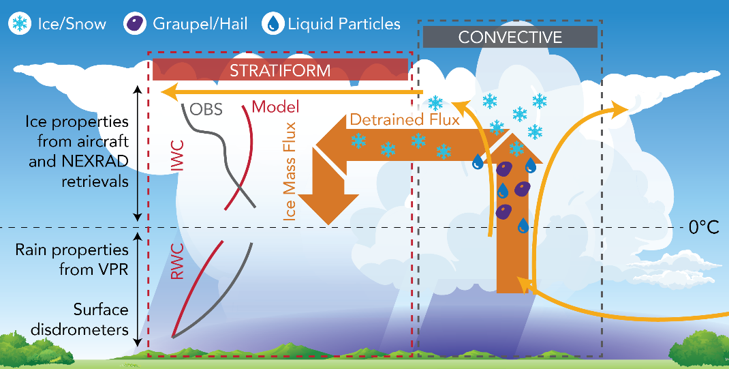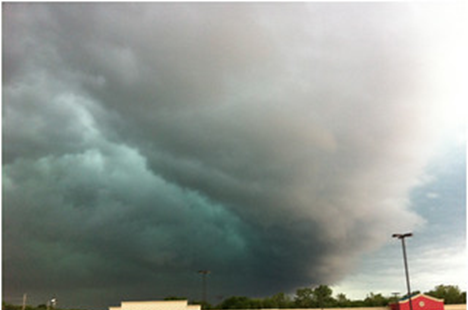Closing the gaps in modeling rain in large storms
Submitter:
Fan, Jiwen — Pacific Northwest National Laboratory
Fast, Jerome D — Pacific Northwest National Laboratory
Area of research:
Cloud Processes
Journal Reference:
Science
Underestimating the amount of widespread, light-to-moderate stratiform rainfall within large convective storms is a long-standing problem in atmospheric models. However, the factors that contribute to this issue are not well understood. Researchers at the U.S. Department of Energy (DOE) led a study comparing model results with observations to characterize bias and across simulations to characterize model variability in simulated stratiform precipitation from a squall line convective system. They identified major factors and processes that contribute to those differences. Results showed that, contrary to real-life observations, simulated ice water content decreased as it fell toward the melting level, and this was a primary cause of the underestimated stratiform rainfall rate. Researchers also found that the variability of stratiform rain properties across simulations using different microphysics schemes was primarily caused by different condensate properties detrained, or pushed out, from the convective area of the squall line system.
Impact
The study addresses a long-standing problem in atmospheric models—failing to simulate stratiform rain area and amount within large convective storms. The findings provide guidance and insights for observational needs and model improvements to reduce model biases.
Summary
In this model intercomparison study, researchers focused on model biases—offsets from observations—and variabilities (differences among simulations) of stratiform precipitation properties for a midlatitude squall line mesoscale convective system (MCS) observed from the Midlatitude Continental Convective Clouds Experiment (MC3E), a DOE-NASA field campaign in Oklahoma. They simulated the squall line MCS, employing a cloud-resolving model with eight different cloud microphysics schemes. Simulations with most of the microphysics schemes underestimated the total stratiform precipitation, mainly due to an underestimation of stratiform precipitation area. All schemes underestimated the frequency of moderate stratiform rain rates and rain water content below the melting level, largely because the ice water content decreased approaching the melting level, which is contrary to the observed trend. The researchers also found that the variability of stratiform precipitation area across the simulations positively correlated with condensate amount detrained from the convective cores, but was also affected by hydrometeor type, size, and fall speed. Stratiform precipitation, rain rate, and area across the simulations, each varied by a factor of 1.5. This significant variability primarily resulted from downward stratiform ice mass flux variability, which was highly correlated with condensate amounts detrained from convective regions. This illustrates the key role of convective microphysics in determining stratiform properties and highlights the need for more measurements of convective kinematics and microphysics in order to improve parameterizations and reduce model biases.



